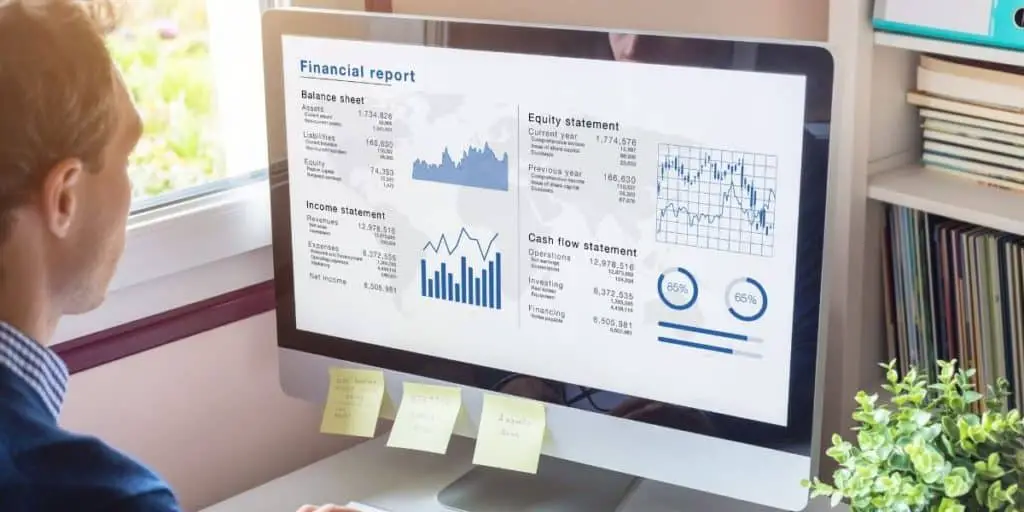Technical analysis is one of the two main methods of predicting the forex, stock and other financial markets. Traders rely on it because it is a quick way of predicting potential market movements. Is it accurate? How often can you rely on it?
The accuracy of technical analysis comes down to the makeup of the analytical strategy and the ability of the trader to adhere to its core principles. A technical analysis strategy may work for a certain trader and fail to yield results for another due to differences in application, discipline, etc.
The rest of this article will look deeper at what technical analysis is about and your chances of success when using it.
IMPORTANT SIDENOTE: I surveyed 1500+ traders to understand how social trading impacted their trading outcomes. The results shocked my belief system! Read my latest article: ‘Exploring Social Trading: Community, Profit, and Collaboration’ for my in-depth findings through the data collected from this survey!
Table of Contents
What Is Technical Analysis?
In trading, technical analysis refers to the use of charts and indicators to predict future market movements by looking at historical price data. It’s based on the premise that the market is semi-cyclical. For example, important resistance and support levels will likely get respected, and a new direction change will likely continue for a while.

Technical analysis tries to find these pointers towards future market behavior by looking at how the market reacted in the past under the same conditions.
A typical technical analyst will look at forex charts with indicators and tools like the Japanese Candlesticks, Support, and Resistance lines, Moving Averages, Bollinger Bands, Parabolic SAR, etc., to predict where the market is likely headed next. These tools are designed to calculate past price movements and draw inferences on what will likely happen next.
Technical analysts create a strategy formed around the main focus of their analysis. For example, a trader that relies on Moving Averages to predict market movement may choose to enter a trade in the direction of a Moving Average Crossover. Once they open up a chart for any currency pair or other tradable instruments, they plot their preferred types of Moving Averages and watch for this cross to enter (or exit a position).
How Often Is Technical Analysis Correct?
You won’t get 100% accuracy with technical analysis. No method of analysis in financial market trading can guarantee that. A sound technical analysis strategy will have what is known as a win rate. This is the historical accuracy of the strategy. Going back to our example above, a Moving Average Crossover strategy may be accurate 80% of the time, depending on the settings applied and other conditions.
Technical analysts work out the strategy’s accuracy by running a “backtest” using their rule set to see how the market would have responded to their technical analysis in the past. Accuracy above 65% is positive, especially when the trader targets twice the amount risked as profit. This is known as having a positive risk-reward (RR) ratio.
However, you should not judge the accuracy of technical analysis after a handful of trades. A strategy with 80% accuracy may deliver 20 losing trades in a row before delivering the profitable 80 trades. The best technical analysts develop or adopt a sound strategy with a proven history of success and allow probability to run its course over time.
What Conditions Affect the Accuracy of Technical Analysis?
There are a few reasons why technical analysis may not be accurate:
The Strength of the Strategy
As we’ve seen above, technical analysis involves combining various technical tools to develop an effective strategy. The strategy then has to be tested with old market data to ensure it has a high enough win rate, making it useful in real market conditions. Remember, the entire philosophy is based on hoping that the market will repeat itself (or come close) under specific conditions.
Unfortunately, many traders call themselves technical analysts without understanding how the technical tools they deploy predict price movement. In some cases, they download technical strategies from online forums after seeing a random trader use the same methods to record short-term success.
To ensure you have a solid technical-analysis-based strategy, you need to understand how all the tools involved typically work. You also need to ensure the strategy has been backtested for a minimum of ten years to see how it has performed in diverse market conditions. For the best results, run the backtest using multiple R:R ratios to see what works best.
A strategy that delivers twice your risk amount as profit in at least 65% of trades taken is a solid one. As the accuracy rate dwindles, your chances of success with such a technical-analysis-based strategy will fall.
Trader Discipline
When you’ve secured a tried and tested technical-analysis-based strategy, you still need to have the discipline to take action when necessary. Ignoring the strategy’s rules or making things up as you go along will affect the accuracy of your technical analysis. You need to take trades when the strategy dictates, exit when it’s time, and always risk the right amount of money per trade.
The amount at risk is yet another aspect of trading that’s influenced by technical analysis.
Discipline in trading is why two traders using the same strategy on the same tradable instruments can generate very different results.
Market Conditions
Technical analysis is based on predicting the future by looking at the past. However, the market doesn’t always move in the same patterns. Volatility will ebb and flow as the years roll by. This means that a technical strategy that generates 100 pips of profit per trade on average this year may generate 70 pips on average next year. It may also generate 200 pips or closeout at breakeven more frequently.
The best technical analysis strategies will weather most market conditions and remain profitable over the long term. Remember, it’s all about playing the probabilities.
Instrument-Specific Issues
Ten years ago, the EURUSD was a lot more volatile than it is today. Technical analysis strategies based on it would be less profitable today compared to in 2010 or earlier. The number of winning trades and overall strike-rate may not be affected, but the impact of the positive trades may have diminished a great deal.
Technical analysts in this situation often recalculate the specifics of the strategy where possible by taking the Average Daily Range into account. Others take the reduced profits or look to replicate the strategy on another pair. Apart from volatility, changes to transaction costs (spread, swap, leverage) may affect a strategy’s accuracy over time.
What Is the Alternative?
Fundamental analysis is the main alternative to technical analysis, but it is not for everyone. A quick search online will show you lots of opinion pieces that say fundamental analysis is the best. Some even say technical analysis doesn’t work. However, most savvy traders will tell you that the forex trading world is highly subjective.

People swear by what works for them. In reality, the average forex trader can’t compete in the market using fundamental analysis alone.
You’ll need a proper understanding of economics and know how to read and interpret global political and business pulse. You’ll also need to have a subscription to high-speed news feeds to get breaking news immediately it happens. That’s a lot of work for the average retail trader. In many cases, technical charts will capture the impact of fundamental releases on the forex, stock and other financial markets.
Author’s Recommendations: Top Trading and Investment Resources To Consider
Before concluding this article, I wanted to share few trading and investment resources that I have vetted, with the help of 50+ consistently profitable traders, for you. I am confident that you will greatly benefit in your trading journey by considering one or more of these resources.
- Roadmap to Becoming a Consistently Profitable Trader: I surveyed 5000+ traders (and interviewed 50+ profitable traders) to create the best possible step by step trading guide for you. Read my article: ‘7 Proven Steps To Profitable Trading’ to learn about my findings from surveying 5000+ traders, and to learn how these learnings can be leveraged to your advantage.
- Best Broker For Trading Success: I reviewed 15+ brokers and discussed my findings with 50+ consistently profitable traders. Post all that assessment, the best all round broker that our collective minds picked was M1 Finance. If you are looking to open a brokerage account, choose M1 Finance. You just cannot go wrong with it! Click Here To Sign Up for M1 Finance Today!
- Best Trading Courses You Can Take For Free (or at extremely low cost): I reviewed 30+ trading courses to recommend you the best resource, and found Trading Strategies in Emerging Markets Specialization on Coursera to beat every other course on the market. Plus, if you complete this course within 7 days, it will cost you nothing and will be absolutely free! Click Here To Sign Up Today! (If you don’t find this course valuable, you can cancel anytime within the 7 days trial period and pay nothing.)
- Best Passive Investment Platform For Exponential (Potentially) Returns: By enabling passive investments into a Bitcoin ETF, Acorns gives you the best opportunity to make exponential returns on your passive investments. Plus, Acorns is currently offering a $15 bonus for simply singing up to their platform – so that is one opportunity you don’t want to miss! (assuming you are interested in this platform). Click Here To Get $15 Bonus By Signing Up For Acorns Today! (It will take you less than 5 mins to sign up, and it is totally worth it.)
Conclusion
Technical analysis is a broad term, so the accuracy comes down to how you choose to apply it in your trading. There are many facets to this branch of forex analysis, so you’ll need to drill down on the approach to adopt based on your preferences.
If you choose or create a robust technical analysis strategy that can stand the test of time, you will most likely enjoy a moderate-to-high degree of accuracy in your trading.
BEFORE YOU GO: Don’t forget to check out my latest article – ‘Exploring Social Trading: Community, Profit, and Collaboration’. I surveyed 1500+ traders to identify the impact social trading can have on your trading performance, and shared all my findings in this article. No matter where you are in your trading journey today, I am confident that you will find this article helpful!
Affiliate Disclosure: We participate in several affiliate programs and may be compensated if you make a purchase using our referral link, at no additional cost to you. You can, however, trust the integrity of our recommendation. Affiliate programs exist even for products that we are not recommending. We only choose to recommend you the products that we actually believe in.
Recent Posts
Exploring Social Trading: Community, Profit, and Collaboration
Have you ever wondered about the potential of social trading? Well, that curiosity led me on a fascinating journey of surveying over 1500 traders. The aim? To understand if being part of a trading...
Ah, wine investment! A tantalizing topic that piques the curiosity of many. A complex, yet alluring world where passions and profits intertwine. But, is it a good idea? In this article, we'll uncork...
